
Truly wireless earbuds are basically a commodity at this point. You can find options at any price point that sound decent and work well enough. But many of those don’t last, or have some random, deal-breaking flaw. Finding the “right” pair has often ended up costing hundreds of dollars, and even then, there can still be big problems at play. Over the past few months, though, I’ve been using the earbuds that have cracked the formula – Nothing Ear, Ear (a), and Ear (open) – and I don’t think there’s any point in searching further when these exist.
To me, there are three main things that any pair of earbuds have to get right. Sound. Software. Hardware. So, let’s look at all three of Nothing’s 2024 audio products and see where they stand.
Nothing Ear and Ear (a)
Starting with the flagship Nothing Ear, you’ve got a typical “high-end” (in the sense of pricing) pair of earbuds on paper. They’ve got ANC and the promise of solid audio quality, but do they actually deliver? The answer is an inarguable yes. Nothing Ear puts out the clearest, richest audio I’ve experienced in a pair of earbuds to date. They have punch in the bass, but also never sound muddy. If you’re feeding them good quality audio – I typically use Spotify at the highest settings – they’re going to sound pretty darn good. That’s only doubled down by the extensive EQ settings available.
I’m no audiophile, but I really came to appreciate how Nothing Ear sounds even at its default settings. I generally use the “Balanced” EQ alongside “Bass Enhance” at level 3. For certain songs, though, I moved over to the “More Bass” settings. Generally it’s pretty easy for earbuds to overdo it when you turn up bass settings, but Ear strikes a great balance in this regard. The best description I could land on is that the bass feels “real,” like it’s coming from a big speaker somewhere in the room rather than a tiny driver sitting in your ear canal. It’s impressive, and something I’ve rarely experienced in other earbuds.

I think this all speaks to the overall sound profile that Nothing has developed for these earbuds, something that This Is Tech Today explains in better detail than I possibly could. In short, Nothing’s sound profile is among the best in the industry, and it does really show.
For me, the biggest point in favor of the Ear’s quality is how it handles the little things. Often times when I listen to a song I’ve heard a million times for the first time on the Ear, I find new things to love about that song. Little notes or lines in the song that I just couldn’t hear as clearly before. This is especially true of the low ends, where I’ll feel better impact from those notes, rather than the harsh “boom” I might have had elsewhere.
Noise cancellation is perhaps the only place I felt these fell a bit short. That’s not to say it’s bad. It’s perfectly acceptable for most scenarios, like mass transit, a coffee shop, or even a short flight. But compared to something like the Galaxy Buds 3 Pro, I found myself wanting a bit more isolation. Too many sounds still leak through, even with ANC turned to “High.” The “Adaptive” setting is really good for situations like an airport, I found, while transparency, as always, leaves a bit to be desired.
Outside of the sound quality, which I truly believe is not just the best at this price point, but the best that most people can get in general, there’s the physical hardware.

The earbuds themselves have a driver and stem design similar to Apple’s AirPods, but in a much more reserved and comfortable form. The stems don’t come down as far, and really just leave the weight very well-balanced. I can wear these for hours without feeling any ear fatigue. The design is also just plain cool, with Nothing’s signature transparent design and some nice color accents thrown in. There’s nothing else that really looks like this, and in black the design is subdued enough to where it doesn’t draw undue attention.
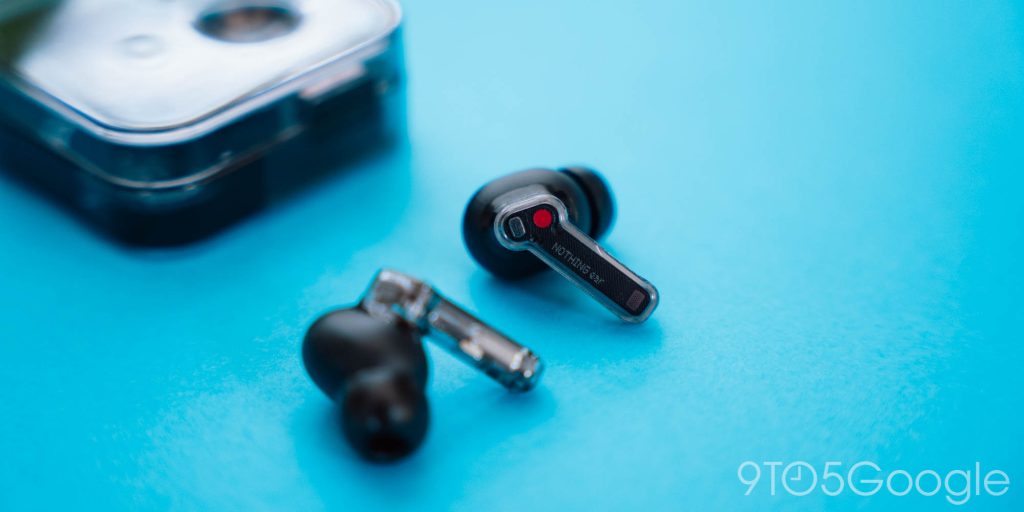
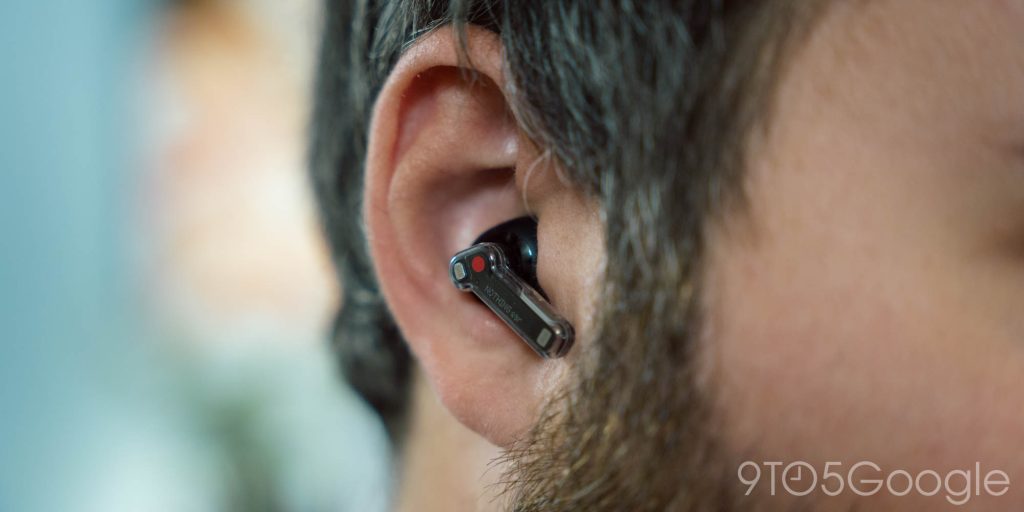
“Touch” controls are actually pinch controls, and they work well enough. It doesn’t take too much effort to make that pinch, and the fit means I’m not needing to readjust the earbud after using controls. A single pinch is a non-customizable play/pause or answer/end a call, while the double and triple pinch controls are customizable between the two earbuds through the Nothing X app. There are also “pinch and hold” and a “double pinch and hold” controls that offer further functionality, but I found it a little tough to remember that many gestures. By default, double pinch skips, triple goes back, and pinch and hold adjusts noise controls, which I found good enough, but it’s really nice that there’s so much flexibility.
While we’re taking a look at software, there’s also Fast Pair for Android users, making pairing and multi-device usage a bit easier, though you won’t find things like automatic transfer between paired devices. The feature-load isn’t as deep as you’d find with something like Pixel Buds, Galaxy Buds, or even OnePlus Buds, but on the flip side, that means that Nothing’s earbuds work better across all devices, rather than just focusing in on a single ecosystem.
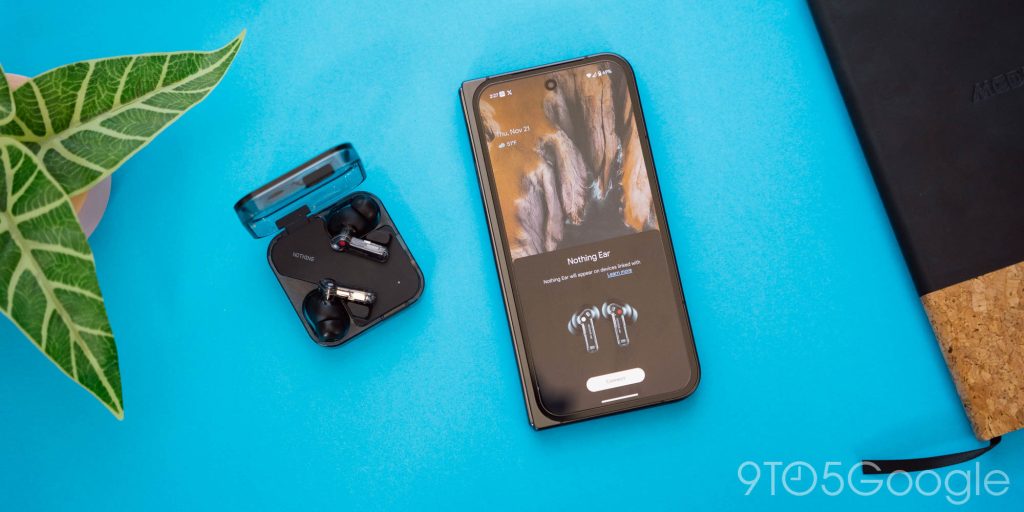
Battery life, an issue on previous iterations of Nothing Ear, is solid from my point of view. That’s to say that, even if I’m using these earbuds daily, I don’t really have to “think” about charging. If I just drop it on my wireless charger from time to time, it’s always full and ready to go, and if I do have an extra-long listening session on a travel day, it’s just habit to plug in the case for a little while at the end of the day anyway. Nothing claims around 5 hours with ANC on which easily matches up with my use, and around 40 hours of battery in the case with ANC off.
The last thing to look at is the case, which I’ve got mixed feelings about. The transparent design remains in place and looks great, but the case isn’t small. The earbuds rest on either side of a center that holds the battery and electronics. It looks good and I appreciate how easy it is to get the earbuds in place thanks to the strong magnets, but I don’t like how thick and big the case is. The footprint is larger than most other earbuds and the tight edges make it feel bigger than it is. It also just feels like there’s a bit of wasted space due to how the earbuds sit in place. It’s not bad, but there’s room for improvement.
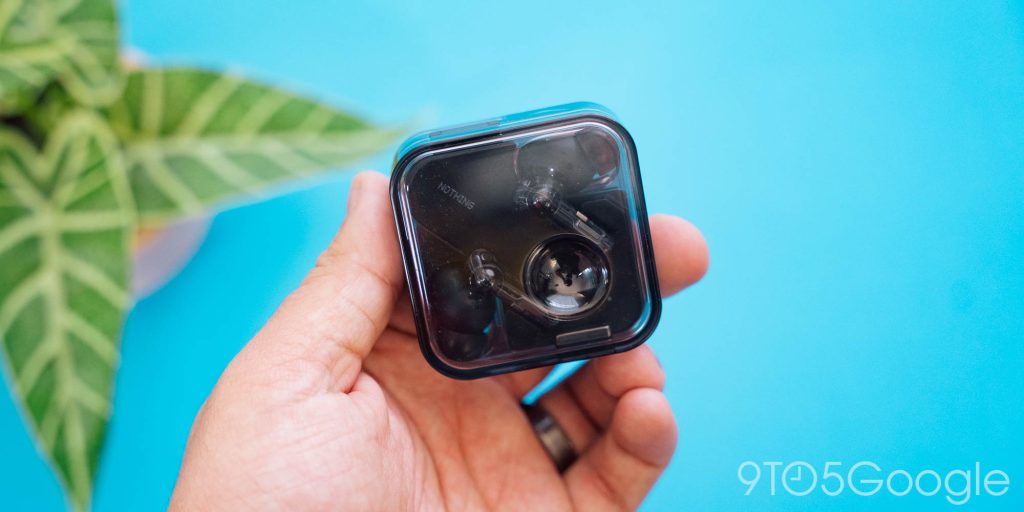
For its $149 price tag, Nothing Ear puts together a package that’s very hard to beat.Yet, Nothing itself sort of did that.
At $99, the Nothing Ear (a) are effectively 99% of the Nothing Ear for 30% off. You get very similar audio quality, similar battery life, and essentially the same hardware design. One of the only notable differences is a welcome splash of color in the unique yellow option.
The only thing you really lose is the in-depth EQ settings. You’ll still get a good selection of presets and, in my eyes, more than enough control, but the granularity available on Ear is removed. Those “little things” I mentioned earlier that the Ear are so good at are somewhat lost on Ear (a), but barely. These still punch way above their price in terms of audio quality, and they still have ANC on top of that.
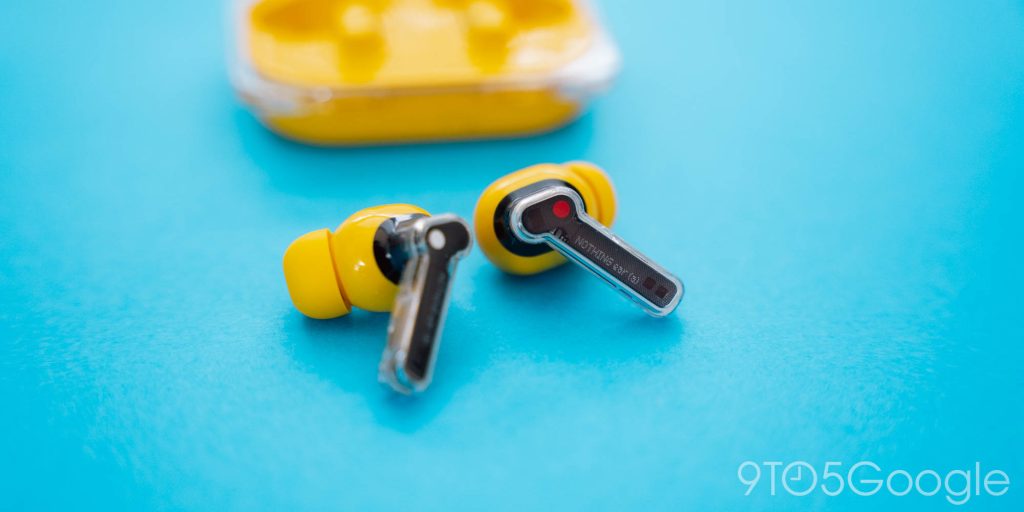
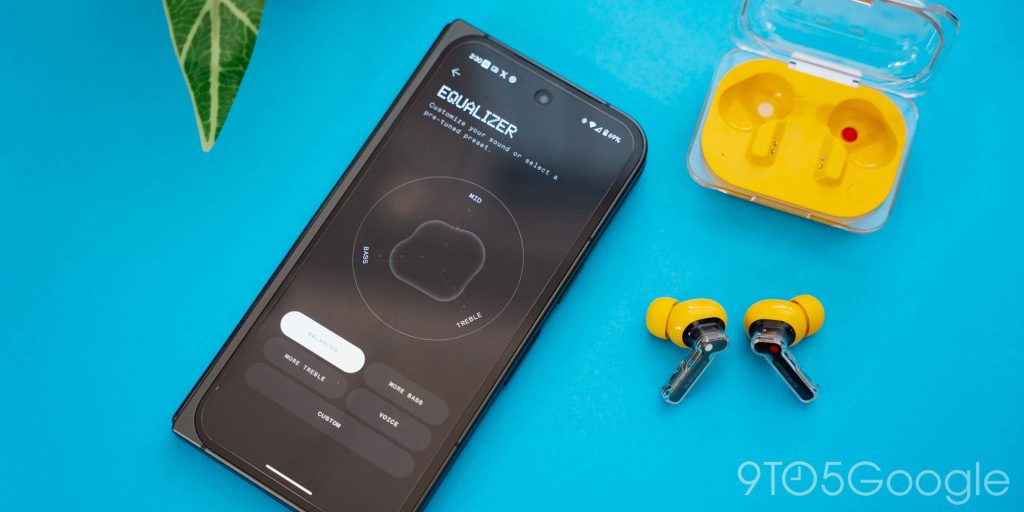
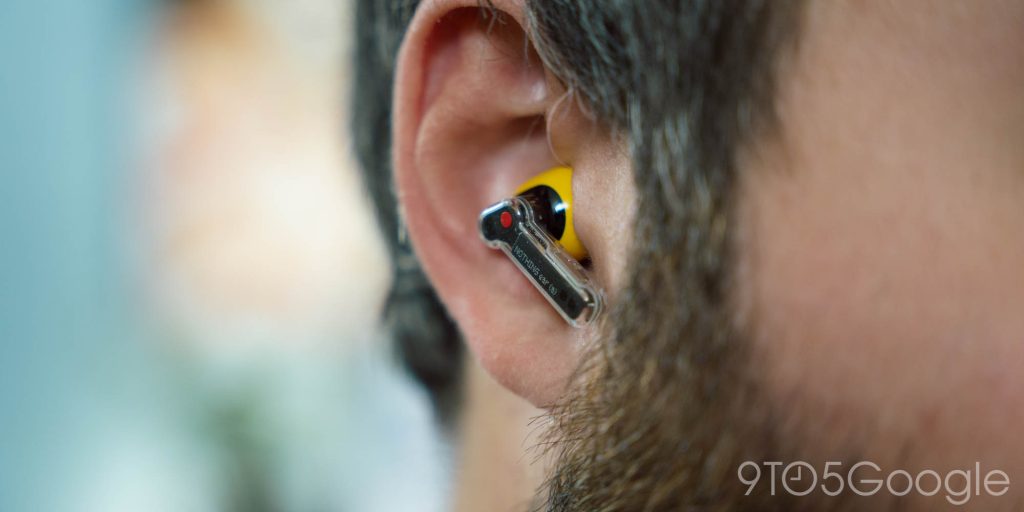
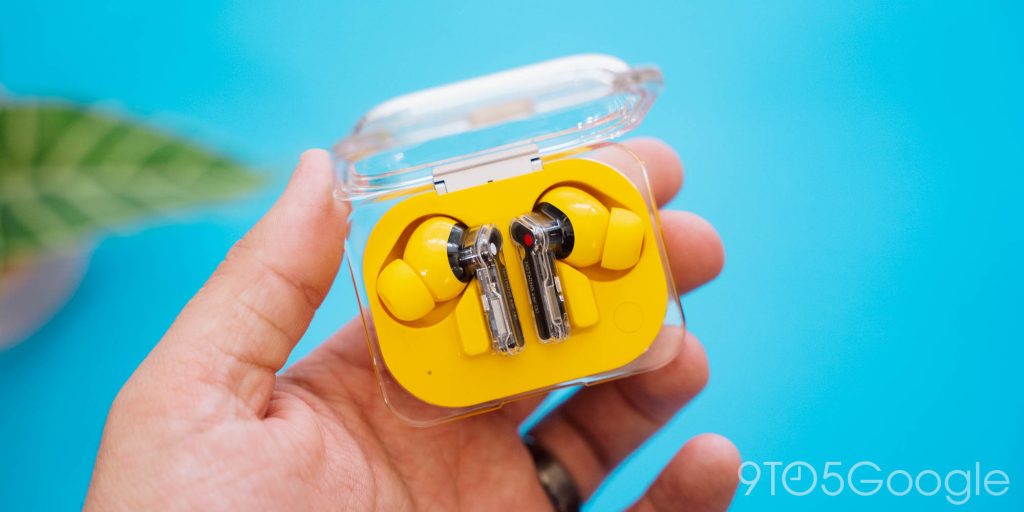
The best part, aside from the price, is the case. It’s smaller than the one used on Ear and fits in my pocket way better. It lacks wireless charging, but it’s better in every other way, including moving the pairing button to the inside of the case which is much more intuitive.
Nothing Ear (open)
Finally, there’s Nothing Ear (open), a radically different choice.
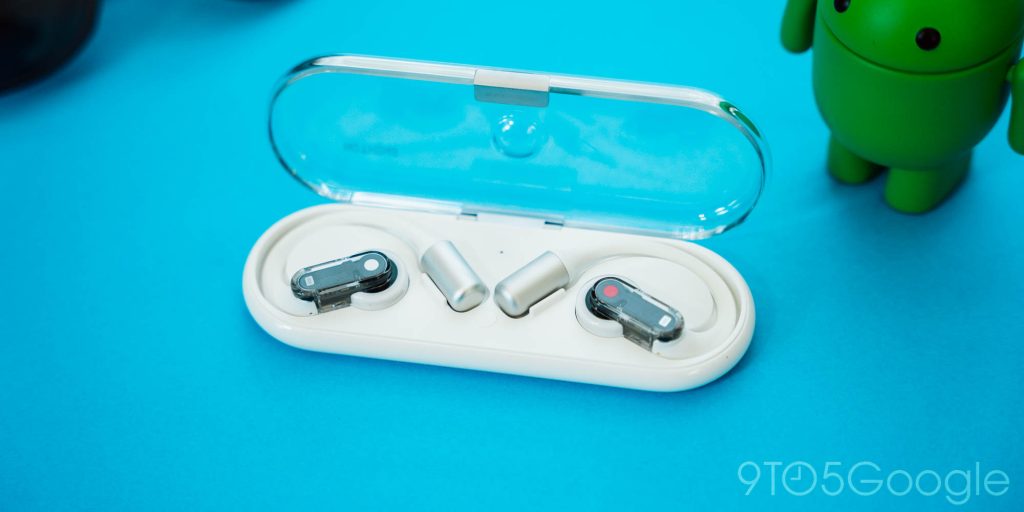
These earbuds are open-ear, meaning there’s no seal. To wear these, you’ll let the hardware wrap around the back of your ear and the driver floats right above your ear. The result is a pair of earbuds that you’ll end up using in completely different scenarios compared to the Ear or Ear (a). Using the Ear (open) on a plane is unthinkable, but they’re phenomenal for a quiet walk, or just lounging around the house/office.
The idea is to keep you fully connected to the real world while still enjoying private audio. As I mentioned in a hands-on earlier this year, they’re like wearing speakers that perfectly fill the room with music, but speakers that no one else can hear.
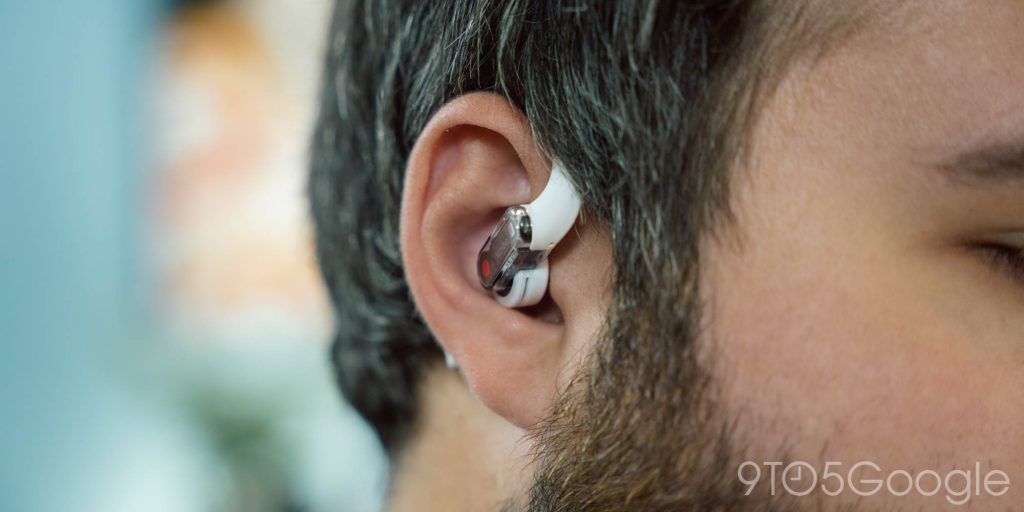
The audio quality on Nothing Ear (open) is also excellent. Despite the lack of a seal, there’s plenty of depth and richness to the audio, though positioning definitely plays a role in getting the best audio. This was tricky at first, but after a couple of weeks, I found myself just knowing how to position the driver to get the best sound without really thinking about it.
Over several weeks of use, I also found where I do and do not like wearing the Nothing Ear (open).
I do love using them at home, for when I want to listen to music without disturbing anyone else in the home, or when I’m moving around the house for chores and speakers aren’t ideal. Another place I really liked them was when walking around in a quiet outdoor scenario. The added ability to keep connected to and aware of my surroundings was definitely preferred in those cases versus earbuds that are designed to isolate me from the rest of the world, and can only pipe in the world through microphones as an alternative, which never sounds as good.
I don’t like using Ear (open) anywhere that has a baseline level of volume. Walking along the streets in NYC during the day left the music I was trying to listen to barely audible unless I cranked the volume to maximum. The same was partially true of a busy airport like LaGuardia. While my home airport in NC is quiet and perfect for Ear (open), I struggled to find a comfortable volume level for Ear (open) at LGA that wasn’t way too loud, and the same applied to a lounge I visited while at the airport. Needless to say, an airplane, the subway, or any places like those are completely out of the question here.
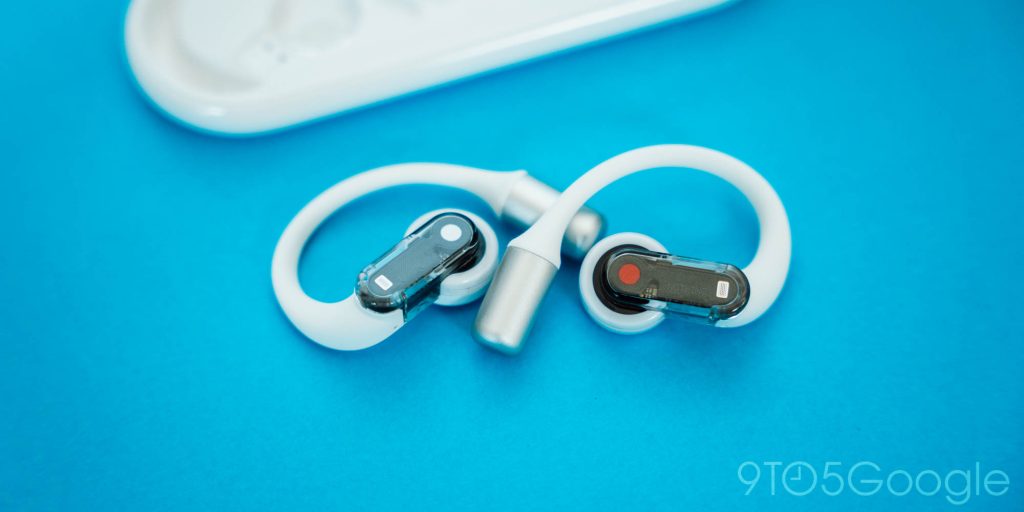
That’s what the Nothing Ear (open) aren’t the easiest products to recommend. They sound great and perfectly fit the niche of fully open-ear headphones, but that’s a really tight niche. You essentially cannot buy Ear (open) as your only earbuds. You would need another pair handy for the places they just don’t work. Switching back and forth between Ear (open) and Ear was a great combo for me, but even with the value Nothing brings to the table, that’s still $300, and not everyone wants to spend that when a “Transparency” mode can fill that open-ear gap in a lot of situations. Spending $149 for earbuds that don’t work everywhere just isn’t ideal for everyone. But Nothing Ear (open) nails it if those downsides don’t apply to you.
Final Thoughts
I’ve tried a lot of earbuds over the past few years from a lot of brands, but I’ve always found myself unable to settle on just one pair that I keep coming back to. Pixel Buds Pro managed to be that for a while, but Google’s excellent battery life and comfortable fit couldn’t outweigh me wanting a little bit more from the sound quality.
Nothing Ear, out of the three, would still be a perfect option if they were priced at $250 or more, but they’re not. Nothing only asks for $149 for these earbuds, and it almost feels too good to be true – even more so for Ear (a).
From my point of view, I really don’t think anyone else comes close to matching Nothing’s offerings here. Looking at the sound quality, the hardware, and the price, it’s just unmatched. Sure, you can spend a little more to get a smaller case, better battery life, or deeper software integration with your smartphone of choice, and that’s all great, but Nothing has struck the perfect balance. These earbuds don’t break the bank, sound amazing, work well with virtually any device, and just hit all of the right notes – pun very much intended.
You can purchase Nothing Ear, Ear (a), and Ear (open) for $149, $99, and $149, respectively, at the links below. All three are even further discounted for Black Friday 2024 to $119, $77, and $129.
Where to buy
Nothing Ear
Nothing Ear (a)
Nothing Ear (open)
Follow Ben: Twitter/X, Threads, Bluesky, and Instagram
FTC: We use income earning auto affiliate links. More.



Comments